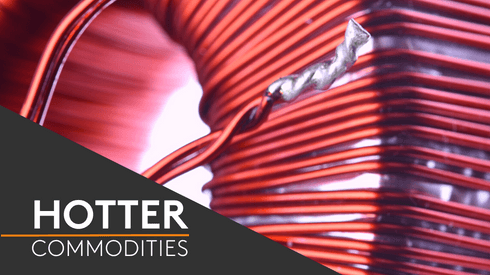Zinc prices have fallen the most, with a decline of 1% to $2,817.50 per tonne, followed by lead prices that are down 0.7%, while copper prices are off 0.4% at $5,893 per tonne – little changed from this time on Thursday. Volume has been slightly above average at 6,106 lots as of 06:32 BST.
This pull-back comes after a general day of strength on Thursday, although some weakness emerged at the end of the day. It may be that end-of-month and quarter profit-taking started to emerge at the end of the day. News overnight that the strike at Peru’s Cerro Verde copper mine is over may be weighing on sentiment too.
In the precious metals this morning, gold and silver prices are slightly weaker with spot gold at $1,241.71 per oz, while platinum prices are up 0.3% and palladium prices are unchanged. This comes after a day of general weakness on Thursday that saw gold, silver and platinum prices fall between 0.5-0.8%, with gold prices closing at $1,243.50 per oz, while palladium bucked the trend with a 0.6% gain to $791 per oz.
In Shanghai, the May base metals contracts on the Shanghai Futures Exchange are mixed. Zinc prices lead on the downside with a drop of 1.1%, lead and tin prices are off 0.2% and 0.4% respectively, while nickel, copper and aluminium are up an average of 0.4%, with copper prices at 47,660 yuan per tonne. Spot copper prices in Changjiang are up 0.5% at 47,270-47,470 yuan per tonne, with the LME/Shanghai copper arb ratio firmer at 8.1, which means the arb window remains closed.
In other metals in China, September iron ore prices on the Dalian Commodity Exchange are weaker, they are down 1.2%, on SHFE steel rebar prices are up 0.4%, while gold and silver prices are off 0.8% and 0.2% respectively. In international markets, spot Brent crude oil prices are down 0.5% at $52.79 per barrel and the yield on the 10-year US treasuries is firmer at around 2.41%.
Equities were stronger on Thursday, the Euro Stoxx 50 closed up 0.2% and the Dow closed up 0.3%. Equities in Asia, however, are for the most part weaker, but after a strong quarter some of the weakness is thought to be end of period profit-taking. The Nikkei and Kospi are off 0.1%, the Hang Seng is down 0.6%, the ASX 200 is off 0.5%, but the CSI 300 is bucking the trend with a 0.3% gain.
In FX, the dollar index continues to rebound, it was recently quoted at 100.55, conversely the euro is weaker at 1.0677, as is the yen at 111.86, while the sterling is firmer at 1.2473 and the Australian dollar at 0.7644 is little changed. The yuan is weaker at 6.8840, the rupee and peso are the stronger emerging market currencies, while the other ones we follower are on a back footing, especially the rand that has fallen to 13.4420, from a recent high of 12.3080 – the weakness prompted by South African president Jacob Zuma sacking his finance minister Pravin Gordhan and making numerous other cabinet changes.
The economic calendar is packed with important data today with generally better Japanese data emerging, see table below, although the drop in household spending was disappointing. Chinese manufacturing PMI climbed to 51.8, the highest since mid-2012 and non-manufacturing PMI climbed to 55.1 from 54.2. German retail sales grew 1.8%, this significantly stronger than the 0.7% gain expected. There is more CPI data out across the euro-zone, plus a host of other important data, again see table below. US data includes personal income, spending, PCE prices, Chicago PMI and revised University of Michigan consumer sentiment and inflation expectations. In addition, US Federal Open Market Committee (FOMC) member William Dudley and UK Monetary Policy Committee member Andrew Haldane are speaking.
The trends in the base metals remain broadly upward, albeit to varying degrees, but the upside going is laboured for most of the metals as higher prices attract selling. Thursday’s firmer tone seems to have run into month-end profit-taking and there may be more of that around today. Aluminium remains the one metal that has broken higher recently and looks well placed to extend higher. The better Chinese PMI data bodes well, especially as we cross over into the second quarter.
Gold and silver prices have put in a strong rebound since the March FOMC rate rise, but prices are struggling to overcome the late-February/early-March highs and with risk-on returning to broader markets that is not so surprising. But, we expect dips to remain well supported and there may well be further haven asset demand as we move through April when political uncertainties rise over the progress of Brexit and ahead of the French election.
Metal Bulletin publishes live futures reports throughout the day, covering major metals exchanges news and prices.





